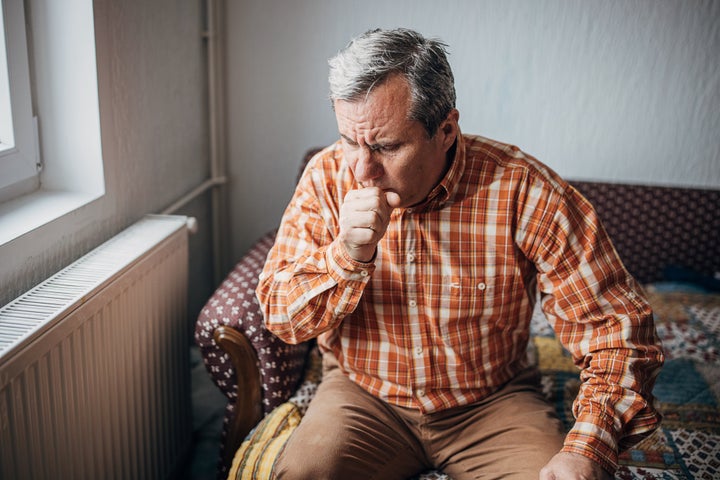
Coronavirus is on the rise again throughout much of the United States, where EG.5 – a subvariant of the virus – now accounts for the majority of Covid-19 cases in the country, according to recent data from the Centers for Disease Control and Prevention.
“Over the past month or so, we’ve seen a steady but slow increase in the total number of Covid cases. That’s a trend that’s pretty consistent across the country,” said Andrew Pekosz, professor and vice chair of the Department of Molecular Microbiology and Immunology at the Johns Hopkins Bloomberg School of Public Health.
EG.5, also called Eris, might be responsible for many of the cases right now, but subvariants that have been around for quite some time, like XBB.1.16, are also behind the uptick, according to Pekosz.
“In the U.S., we still see a lot of infections with other members of the XBB family of variants,” Pekosz said. (XBB is a group from COVID’s omicron variant, which mutated over and over to create these new COVID strains.)
“In fact, EG.5 is a member of that XBB family. It’s just picked up enough mutations so that we call it by a different set of letters,” Pekosz noted.
Additionally, Dr. Kristin Englund, an infectious disease specialist at Cleveland Clinic, said another strain called FL.1.5.1 is also causing an increase in cases in the Northeast, according to the CDC. As for hospitalisations, they’re increasing too, but remain low overall compared to earlier periods of the pandemic.
While it’s not necessary to panic, now is the time to get ahead of this virus before you – or your loved ones – get infected. Here’s what to know about the symptoms of EG.5, along with some basics about the subvariant so you can protect yourself:
The symptoms of EG.5 are largely the same as previous variants
First, know that “symptoms will vary from person to person,” Englund said.
But most people can expect the same symptoms that have been associated with Covid-19 for the past few years.
“For most people, symptoms have been mild and included a dry cough, headaches, runny nose, sneezing, sore throat and tiredness,” Englund said.
In some folks, these symptoms can progress to difficulty breathing, according to Pekosz.
These symptoms are often mild, and there is a reason for this: “Many of the symptoms that you’ll be seeing are going to be probably milder than we reported on before,” Pekosz explained.
“That’s probably because there’s so much immunity in the population that infections are going to seem a little less severe.”
The makeup of EG.5 varies slightly from previous subvariants
“It’s picked up one mutation in its spike protein, and that’s the protein that the vaccine is targeting,” Pekosz said.
This may make EG.5 a little better at infecting people and evading immunity. “If we’re going to speculate, that might be the reason why it’s more transmissible than other variants right now,” he noted.
“But any advantage that it has over existing XBB family members is somewhat small right now, so we’re seeing increases [in cases] but they’re not massive increases like we’ve seen during waves like the first omicron wave or the delta wave before that,” Pekosz added.
Additionally, EG.5 is expected to still respond to antiviral drugs like Paxlovid and will be registered by at-home Covid tests. “Nothing about the variant is in any way sort of stealthy or anything like that. All of the tests, all of the antivirals should work well against it,” Pekosz said.

Everyone should protect themselves and those around them
The Covid-19 pandemic has disproportionately impacted high-risk groups, which includes those who are over 65 and those who have underlying medical conditions that can put them at risk for severe disease.
“We’ve been very fortunate that case numbers have been low for a while but that doesn’t mean that people, particularly in those high-risk groups, shouldn’t be vigilant,” Pekosz said.
At this point, you know what’s necessary to prevent a Covid-19 infection. “First and foremost, get vaccinated and boosted,” Englund said.
There’s also a new booster shot coming out in the fall. While the specifics haven’t been announced yet, Pekosz said the vaccine will be based on the XBB family of viruses, which EG.5 is a part of.
“Personally speaking, the vaccine is very different from the previous Covid-19 vaccines that we’ve had, so I actually think it would be a good idea for many people to go out there and get the vaccine this fall,” Pekosz said. “It’s different enough from previous vaccines, so that should get a nice boost of immunity to the viruses that are currently circulating.”
Exact specifics about who the vaccine is recommended for and when it’s available should be announced by the CDC by fall.
“You should also follow the same precautions you’d take to prevent getting Covid and other viruses like RSV, colds, flu,” Englund said. That means washing your hands, avoiding crowded indoor spaces, wearing a mask and staying home if you feel sick, she said.
If you do test positive, get in touch with your doctor
“If you test positive for Covid, call your doctor to discuss treatment options,” Englund said. “We have medications now that were not available at the start of the pandemic.”
Medications like Paxlovid can help decrease your risk of hospitalisation, may potentially reduce your risk of long Covid and can help you get better faster. “But they must be taken within five days of the start of symptoms to be most effective,” she explained.
Whether you have mild symptoms or a more severe infection, it’s important to talk to your doctor as quickly as possible to make sure you’re doing everything right to get better ― and protect those around you.